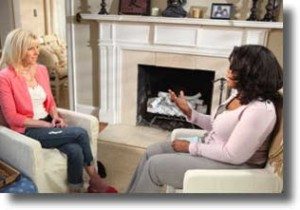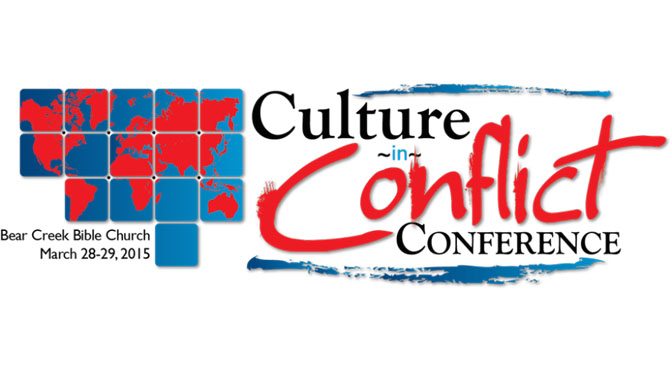Dr. Lawrence Terlizzese says that our obsession with perfection and improvement drives the human enhancement movement. But the key is to rest instead in Christ’s perfection.
Perfection and Human Enhancement
Americans want to be perfect and the science of Human Enhancement promises to deliver that ideal. Perfect looks, athletic ability, intelligence, greater productivity, increased longevity and even moral perfectionism are all within reach or so many think. Human Enhancement is the current fashionable term for all the new ways to alter the body and mind to make people more fit and adaptable to the ever changing pace of progress. Human Enhancement is not an organized school of thought, but a societal-wide trend aimed at achieving perfection. Drugs can be used to enhance an athlete’s physical performance in order to perfect his swing or increase a student’s intelligence by improving memory and attention span, creating a straight A student. Cosmetic surgeries make women more beautiful and appear younger. The right administration of certain drugs will increase empathy in the brain and help prevent spousal infidelity. Growth hormones given to children make them taller and increase their chances of success. Sex selection is now possible so that you can have the perfect boy/girl balance in your family. Eventually embryos will be screened to remove undesired genes that lead to obesity or genetic diseases and even determine hair, skin and eye color. You will be able to custom order the perfect child.
 The crux of the Human Enhancement issue surrounds values of perfectionism that desire the technology necessary to make these things possible. Perfection represents a controlling obsession for many Americans. We demand perfect grades from our children. An A- can question an entire academic career. Why not an A? We demand perfection at work. Americans are the hardest workers in history, who have internalized the Protestant Work Ethic like no other people.
The crux of the Human Enhancement issue surrounds values of perfectionism that desire the technology necessary to make these things possible. Perfection represents a controlling obsession for many Americans. We demand perfect grades from our children. An A- can question an entire academic career. Why not an A? We demand perfection at work. Americans are the hardest workers in history, who have internalized the Protestant Work Ethic like no other people.
And most of all we want perfect bodies that defy age and sickness, epitomizing youth and vitality. Women suffer the hardest under the burden of perfection. Media is saturated with images of young beautiful blonde bodies selling things. Writer Natalia Ilyin asks in her book Blonde Like Me the important questions concerning beauty; “Where does our fetish for measurement come from? How do we decide that one person is more good-looking (and therefore ‘better’) than another? Why do comments made about our fat go to our bone? What happened along the way that made size six beautiful and size twenty a crisis?”{1}
Perfectionism reveals the age old desire of humanity to aspire to divinity. In the past we only had myths to follow, but today enhancement technology brings the realization of perfection ever closer.
Apollo as the Old Greek Ideal
We derive our ideals of perfection from historical precedent and desire to master ourselves and the world around us. Our Puritan heritage is one major source for our obsession with work, thrift, education and industry. Our moral perfectionism has an ancient history we can trace as far back as the fifth century monk Pelagius who advocated moral perfection and the power of the will and works righteousness. But our obsession with bodily perfection is even older, and like so many things in the modern world it has its roots in the ancient Greeks. Ilyin notes that “Measurement is the apparatus of mankind’s search for perfection. We hear all our lives about the ‘perfect body,’ ‘perfect proportion,’ ‘perfect features.’ But what does perfect mean, really? Where do we get the idea of ‘perfect?’”{2}
The Greek philosopher Plato taught that perfection exists in an ideal world outside the everyday one. The perfect apple exists as an idea and common apples we come into contact with are pale imitations of that ideal. None of the apples we see can compare but they all derive their nature as apples from the ideal.
Greek religion, too, is still present in striving for perfection. Apollo the sun god was believed to embody the perfect human form: young, blond, athletic and male. A beautiful body meant a beautiful mind. “Your blond hair meant that the purity of the sun lived within you. Apollo’s blond symbolized the beauty of the power that could order and control nature. It symbolized the beauty of the rational mind.”{3} The burden of physical perfection was not always the concern of women, but was first located in young men. However, because the Apollo Cult was homoerotic the image of perfection was transposed to women in Christian times. The beautiful blonde images that consume our culture, such as the blonde on the cover of Shape magazine, are really “Apollo in drag,” as Ilyin states.{4}
The burden of female perfection reverberates in a recent song by Pink who sings to her daughter,
Pretty, pretty please
don’t you ever ever feel
like you’re less than perfect;
pretty, pretty please
if you ever ever feel
like you’re nothing,
you are perfect to me.{5}
The ideal of perfection has a way of making us feel like we can never measure up.
Perfection represents an unrealistic goal in any area of life and will always produce the accompanying sense of failure. The desire for divinity as imitation of Apollo or the perfect human form, a striving towards an angelic existence, will always let us down.
Eugenics and Human Enhancement
The goal of Human Enhancement is to improve humanity. This sounds like a noble intention, but as we uncover its meaning it appears to be fraught with complications. In the past this was known as eugenics or the science of human breeding. Most famously, eugenics is remembered as the basis of Nazi genocide, but it was extremely popular in the United States as well, which served as inspiration and precedent for the Nazi program. Many laws were passed in the 1890’s and early 1900’s preventing the “feeble-minded,” or epileptic, schizophrenic, bi-polar and depressed individuals from marrying and imposing forced sterilization in order to inhibit them from passing on their negative traits.
Eugenics was discredited after the holocaust. Society abandoned it with good cause, yet eugenics is making a comeback. With the advent of biomedical technology it is now possible to continue the goal of trait selection. Prenatal testing for diseases through the procedure of amniocentesis identifies many complications such as Tay-Sachs, Down Syndrome, sickle-cell anemia, hemophilia, and cystic fibrosis, and also tells the sex of the child. Although prenatal testing can result in early treatment, women may also choose to terminate their pregnancy. This practice has already resulted in an imbalance between male over female children in some regions of India. Ethicists fear the practice will eventually lead to the termination of fetuses believed to carry the genes for obesity, homosexuality, alcoholism and like a ghost from the past, low intelligence, even if these genes do not actually exist.{6}
The philosopher Philip Kitcher notes two types of eugenics. The first is known as coercive eugenics and was implemented through state manipulation. Second, he indentifies a new kind of eugenics called “laissez-faire eugenics,”{7} also called “liberal eugenics” because it holds the individual choice of trait determination as sovereign. Through sex selection the perfect boy/girl balance may be achieved along with the elimination of perceived birth defects and genetic flaws, sparing parents the anguish of watching children die slow deaths. However, prenatal testing that leads to trait selection does not resolve the quandary of abortion that is currently necessary to achieve parental goals. Eugenics is grounded in values and preferences for a certain type of person justified under the rubric of “improvement.” The new eugenics offers no opposition to market forces from eventually predetermining any physical characteristic thought most advantageous for success in liberal society, and may return us to the Superman ideal. History teaches the dangers of preoccupation with perfect human form, but people have no ears to hear the lessons of history. We appear destined to repeat the mistakes of the past if we do not change our values that prize strength over weakness or curb our desire for perfection in our children.
Cyborgism
Human Enhancement adopts the cyborg image as its ideal. “Cyborg” was a term coined in 1960 by Manfred Clynes and Nathan Kline, two research scientists wanting to redesign the human body in order to make it adaptable to the inhospitable environment of outer space. It has since come to be applied to the entire human and technological merger. Cyborg is short for cyber organism. A cyborg is any living thing that has been adapted to a technological apparatus so that the two are now inseparable. The first animal cyborg was a rat in 1960. It had a Rose osmotic pump attached to its tail which injected chemicals into the body in order to regulate its life support system.{8} Cyborgism is the belief that human adaptation to technology represents the natural development of evolution. Humanity has always used some form of technology, whether fire, knife or arrow, to enhance its existence. The current trend towards our complete absorption into a technological world represents the culmination of a long symbiotic relationship between humanity and its machines. People are, as philosopher Andy Clark says, “Natural-Born Cyborgs.”{9} This view argues that we are technological animals, meaning it is human nature to use technology and define ourselves by it.
In her famous essay A Cyborg Manifesto, Donna Haraway argues that the Cyborg is the new metaphor or ideal of human existence because it simultaneously transcends and includes all differences.{10}
Both theories argue that the lines of demarcation between humanity, nature and machine are rapidly disappearing. Like a scene out of the movie Blade Runner we are rapidly approaching a time where the organic and inorganic worlds will completely merge and the words “natural,” “human,” and “machine,” will no longer mean different things.
This position does not view humanity as either special in some way, or distinct from nature, or possessing a rational soul. It springs from materialism [the worldview that says there is no reality beyond the physical, measurable universe]. Clark argues that this ancient prejudice blinds us from our true technological nature.{11} Clark is right in identifying what Christians call the imago dei or image of God as the primary demarcation between humanity and the rest of nature. If this traditional boundary line is lost, the current ideal of “improvement” and “perfection” that leads to a higher evolutionary form can flourish unimpeded.
Perfection in Christ
Human Enhancement has restored sight to the blind, brought hearing to the deaf, enabled the lame to walk, and healed diseases—things once thought only possible by miraculous powers. It promises to extend our life expectancy and further increase communication. The realm of possibilities does appear limitless to what new technology will accomplish. However, the ideal of perfection driving our technology is based on an overestimation of human powers and the failure to recognize that our perfection has already been accomplished.
Christians can agree that human beings are technological animals. This is no different than when Aristotle said people are social animals. This just means it is human nature to be social or technological; but we disagree with the notion that we are nothing more than that. Although we were made in the perfect image of God (Gen. 1:26), that image was lost in part due to Adam’s sin. We can survive in the harsh conditions of the natural world with technology, which is nothing more than extensions ourselves. But we cannot restore that image without a spiritual rebirth that only God can give us through the work of Christ which we appropriate by faith. Technological enhancement will not lead us to perfection. “Man cannot live by bread alone” (Matt. 4:4). The Bible calls Jesus Christ the “last Adam” (1 Cor. 15:45) by which it means he was the perfect man sent to restore the human race. “And having been made perfect, He became to all who obey Him the source of eternal salvation” (Heb. 5:10). Humanity constantly strives to recover that lost image through its own good works and religious striving. The technological fetish of our day is simply another form of that works righteousness or humanity trying to earn its own salvation and perfection. It is the old works righteousness of the Pelagian heresy dressed up in modern garb.
You are called to find your rest in Christ, to accept who you are and not to imitate Apollo (physical form and beauty) or the Cyborg (technology and progress) in reaching for perfection, for they are redeemed in Christ as well. Christ has already accomplished perfection and we are perfected in Him; “you have been made complete [perfect] in Him” (Col. 2:10). And through Christ we can extend his example of perfection to the world. “For I am confident of this very thing, that he who began a good work in you will perfect it until the day of Christ Jesus” (Phil. 1:6). Stop striving for a perfect ideal you can never reach. The Psalmist writes, “Be still and know that I am God” (Ps. 46:10). This is a very difficult task for perfectionists. Our charge is to accept the perfection of Christ, to accept that we have been accepted in Him!
Notes
1. Natalia Ilyin, Blonde Like Me: The Roots of the Blonde Myth in Our Culture (New York: Touchstone, 2000), 111.
2. Ibid.
3. Ibid., 112.
4. Ibid., 113.
5. Pink, “Perfect” in Greatest Hits…So Far!!! La Face Records, 2010.
6. Philip Kitcher, The Lives to Come: The Genetic Revolution and Human Possibilities (New York: Tounchstone, 1997), 188.
7. Ibid., 19.
8. Andy Clark, Natural-Born Cyborgs: Minds, Technologies, and the Future of Human Intelligence (New York: Oxford University Press, 2003), 15.
9. Ibid., 26.
10. Donna J. Haraway, “A Cyborg Manifesto: Science, Technology, and Socialist-Feminism in the late Twentieth Century” in Posthumanism, ed. Neil Badmington (New York: Palgrave, 2000), 69-84.
11. Clark, Natural-Born Cyborgs, 26.
© 2011 Probe Ministries
 Oprah: When this is all said and done and we look back on this time of you, Rielle Hunter, the mistress and all of that, what is it you want people to really understand about what has happened here?
Oprah: When this is all said and done and we look back on this time of you, Rielle Hunter, the mistress and all of that, what is it you want people to really understand about what has happened here?
